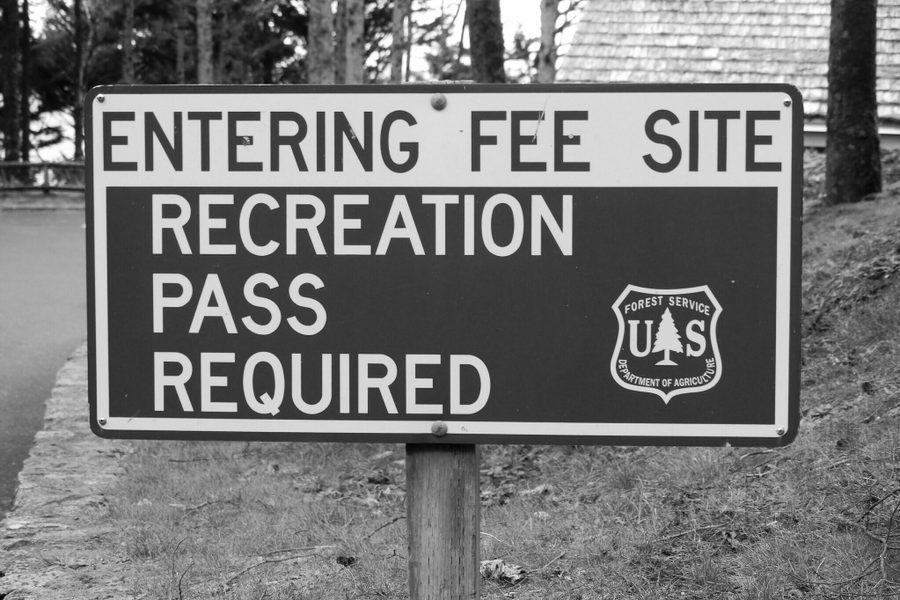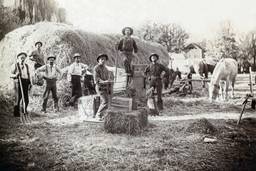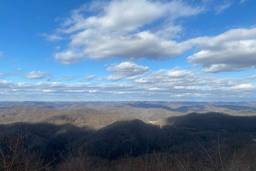No Parks for the Poor
In the face of budget cuts, some land management agencies are ramping up user fees — and betraying the egalitarian promise of public lands.
Joseph Bullington

Livingston, Mont. — A while back I was loafing around a campfire with a group of friends and strangers on the bank of one of this state’s famously beautiful rivers when the conversation turned to the overcrowding problems on another of this state’s famously beautiful rivers.
“Is it too much to ask that we pay a small fee to use the public access sites on the river?” offered a well-meaning and comfortably wealthy retiree. “I sure wouldn’t mind.”
Well, I do mind, and I think a lot of other people do mind, too.
Understand that it’s not because I’m against conservation, or because I believe in human use of land above all else. In some cases I support restricting access to public land if it’s crucial to protecting wildlife habitat. What I’m against is conservation or facility maintenance that depends on weeding out the poor.
The Custer Gallatin National Forest, which spans from Montana to South Dakota and contains most of the wild lands that make up the Greater Yellowstone Ecosystem, recently proposed to ramp up the fees at campgrounds, rental cabins and other sites. In many cases, the agency plans to more than double the price. Fees at several of my favorite campgrounds would go from $5 a night to $12, while the cost of two of my favorite cabins, currently $25 and $30 per night, would rise to $75 per night. The proposal would also impose fees of $10 per night at four campgrounds where now there are none. And in this case, the agency has no such high-minded goal as protecting habitat.
The Custer Gallatin fee hike proposal is not an outlier but part of a general shift in how we fund federal public lands in this country. In 2005, the Federal Lands Recreation Enhancement Act gave federal land management agencies across the country increased power to impose and retain user fees — and, according to a report by the Colorado-based Western Slope No-Fee Coalition, dramatically “changed the focus of land agencies: From resource management and public service to revenue generation. From viewing the visiting public as owners to treating them as customers. From being stewards of resources owned by all Americans to treating the lands they manage as agency property.”
The report goes on: “By allowing local recreation managers to raise their own operating budgets, fee retention … has diminished Congress’s oversight of agency spending, and has almost eliminated the role of the public as the owners of public lands.”
Custer Gallatin Forest Supervisor Mary Erickson explained the agency’s reasoning behind the proposed fee increase in a press release: Most of the Forest’s fees haven’t increased in the last 20 years, and though “it means more than doubling some of our current fees,” the proposed increase “will allow us to continue to provide high quality recreation experiences.” Jane Ruchman, the Forest Service contact person for the proposal, told the Bozeman Daily Chronicle that the fee increase will, in the newspaper’s words, “make the price for Forest Service accommodations more comparable to offerings at private campgrounds or hotels.”
To Erickson I ask this: Do you know what else hasn’t increased much in the last 20 years? Real wages, especially for low-wage workers. And to Ruchman, I’d like to point out that unlike the owners of private campgrounds and hotels, which run them for profit, the Forest Service’s role is to manage the lands we own in common for the benefit of all of us commoners. That the agency finds the price of private hotels in this rapidly gentrifying area relevant to this discussion shows either a misunderstanding or a betrayal of that role.
I’ve lived and passed through other places in this country where, when you pull into a public campground, you expect to stuff $25 or $35 into that ravenous green fee envelope. Besides my selfish, local interest in being able to spend practically half my summers living at the campground up the West Boulder River, I also think non-local people shouldn’t have to be rich to take a road trip to Yellowstone. I love the idea that a family anywhere in this country could pack into their car and spend a week around Yellowstone for no more than the cost of gas, food and $35 for a campsite with all the luxuries of the Four P’s: pit toilet, picnic table, fire pit, and water pump. If there’s any egalitarian spirit left in this country’s institutions — and clearly there isn’t much — it’s embodied in that idea.
In the idea, I said. The reality, of course, is different. In reality, access to America’s public lands, like so much else, is not distributed equally. According to a 2018 Forest Service study, “Recreation Equity: Is the Forest Service Serving Its Diverse Publics?,” the authors found that while Black people make up 13% of the U.S. population, they account for just 1% of National Forest visits. Latinos, who make up 17% of the population, account for just 6% of visits. Native Americans, from whom the lands that became the National Forests were stolen in the first place, are also underrepresented. One of the reasons for this inequity, the authors write, is that minority populations tend to be concentrated in urban communities, geographically isolated from National Forests. However, the authors write, “This isolation and indirect marginalization from National Forest System lands is also often compounded by economic disparities that make access to these areas even more difficult.”
We must do many things to make public lands more accessible and welcoming to all. Increasing fees, and so the cost of visiting, is not one of them.
I am sympathetic to the Forest Service’s need for funding. Despite rising visitation during the pandemic, the 2021 federal budget proposes sweeping cuts to the Forest Service, including the elimination of the Recreation Research program, a $2.1 million cut to trail funds, and a $4.1 million decrease in recreation, heritage and wilderness funding, according to the Billings Gazette.
In the face of those cuts, the Custer Gallatin National Forest would lean more heavily on user fees, 95% of which are retained by the Forest, which “has worked hard over the years to reinvest revenue into maintenance, operations, improvement, and resource protection,” according to the agency press release.
The question before us, however, is not whether to fund Forest Service operations, but how to fund them. Clearly, the Forest Service needs funding. But it should be appropriated in the federal budget, not foisted onto Forest-users in the form of increased fees.
Joseph Bullington grew up in the Smith River watershed near White Sulphur Springs, Montana. He is the editor of Rural America In These Times.







